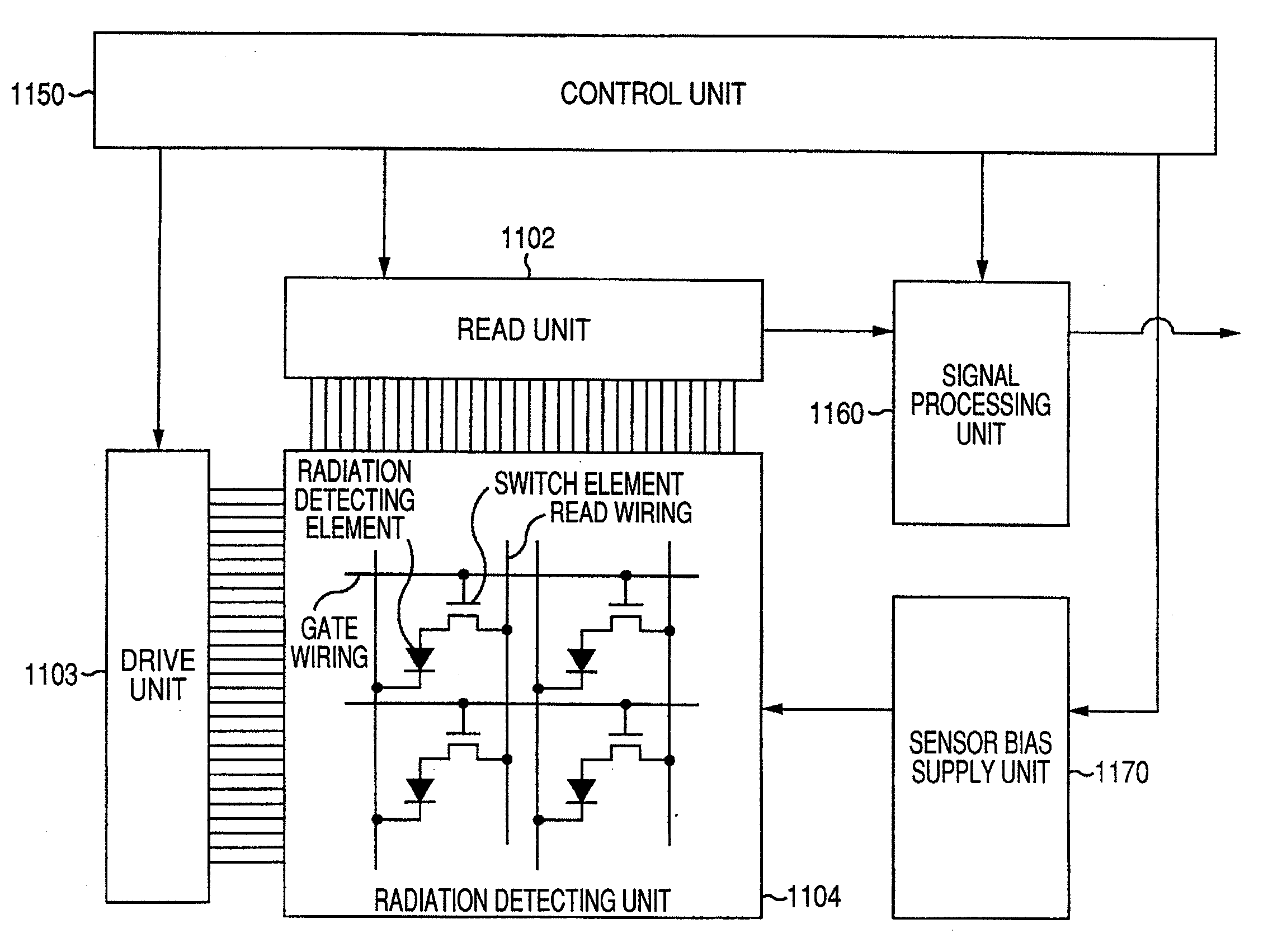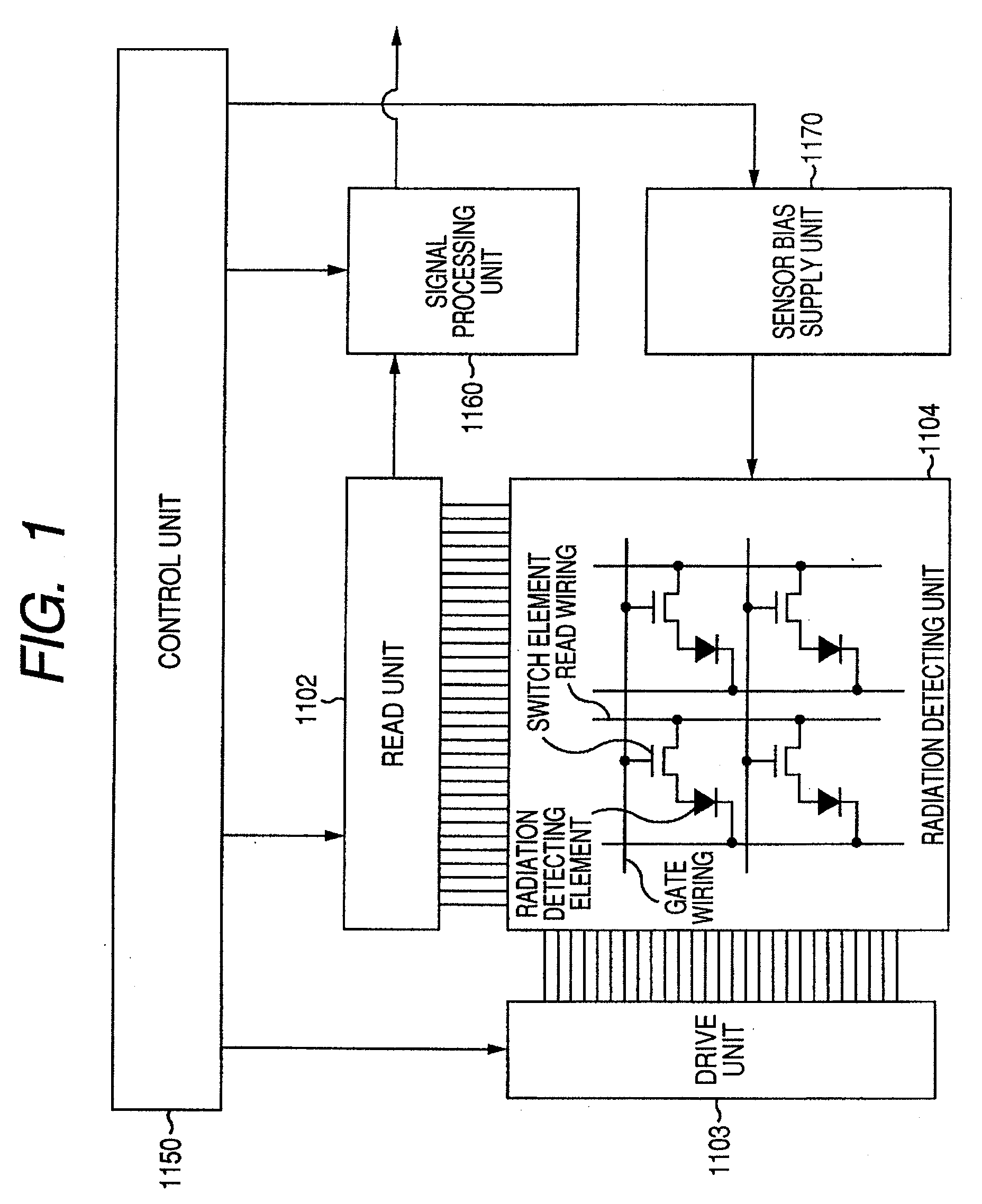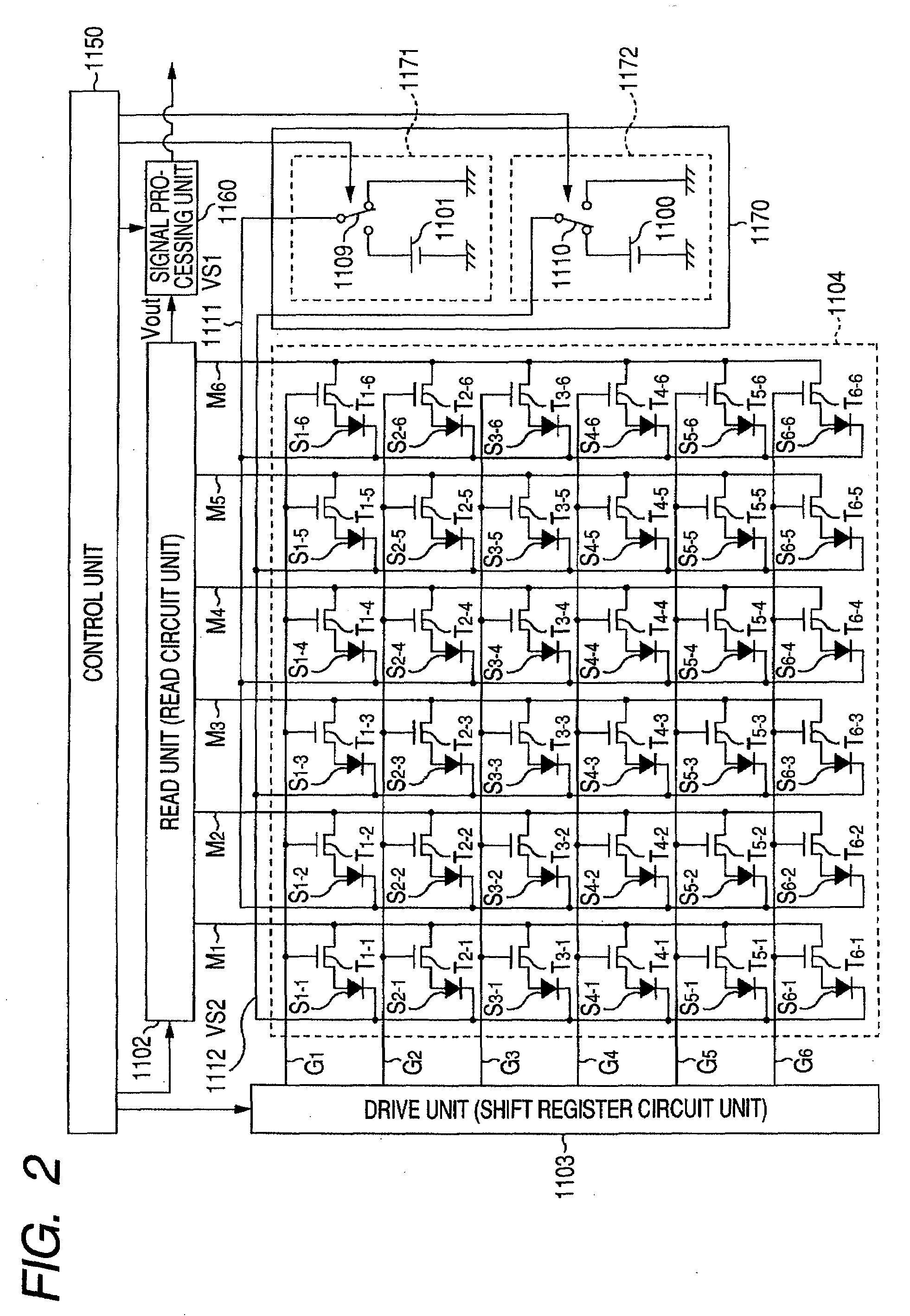Radiation imaging apparatus and radiation imaging system
a radiation imaging and apparatus technology, applied in the field of radiation imaging apparatus and radiation imaging system, can solve the problems of complex algorithm, increased apparatus development and cost, inability to adjust, etc., and achieve the effect of reducing production yield, increasing the cost of apparatus configuration, and consuming more time for processing output signals
- Summary
- Abstract
- Description
- Claims
- Application Information
AI Technical Summary
Benefits of technology
Problems solved by technology
Method used
Image
Examples
first embodiment
[0044]FIG. 1 is a schematic block diagram of a radiation imaging apparatus according to a first embodiment.
[0045]The radiation imaging apparatus according to the first embodiment includes a read unit 1102, drive unit 1103, radiation detecting unit 1104, control unit 1150, signal processing unit 1160 and sensor bias supply unit (voltage supply unit) 1170.
[0046]The radiation detecting unit 1104 includes radiation detecting elements, switch elements, drive wirings and signal wirings and detects incident radiations such as X rays to convert them into signal charges. The drive unit 1103 drives the switch elements of the radiation detecting unit 1104 when electric signals based on signal charges in the radiation detecting elements of the radiation detecting unit 1104 are read. The read unit 1102 reads the electric signals based on the signal charges in the radiation detecting elements of the radiation detecting unit 1104.
[0047]The signal processing unit 1160 provides various processes for...
second embodiment
[0077]FIG. 10 is a timing chart illustrating an example of operation of the radiation imaging apparatus according to a second embodiment.
[0078]In the second embodiment, as is the case with the first embodiment, the radiation detecting elements in the odd columns are made sensible state and the radiation detecting elements in the even columns are made senseless state by the control of the control unit 1150. Thus, also in FIG. 10, Vout representing the output of the analog signal from the read circuit unit 1102 is output every other pixel or only the signals in the radiation detecting elements in the odd columns are output. As illustrated in FIG. 5, in the second embodiment, the drive circuit (shift register circuit unit) 1103 provides such a control as to simultaneously input drive signals into two drive wirings. This causes the read circuit unit 1102 to read the addition of the electric signals in the first and the second line, the addition of the electric signals in the third and t...
third embodiment
[0084]FIG. 12 is a schematic circuit diagram of a radiation imaging apparatus according to a third embodiment. In FIG. 12, the same composing elements as in FIG. 2 are given the same reference characters. In addition, 36 (six times six) pixels are illustrated to simplify the description hereinafter.
[0085]FIG. 12 is different from FIG. 2 in the connection of the bias lines VS1 and VS2 to the radiation detecting elements in the radiation detecting unit 1104. More specifically, in FIG. 12, the first bias line VS1 (1111) is connected to the radiation detecting elements S1-1 to S6-1 in the first column and the second bias line VS2 (1112) is connected to the radiation detecting elements in the second to the sixth columns. In FIG. 12, a voltage (first voltage) relative to GND is applied across the radiation detecting elements in the first column from the first power source unit 1171 and a voltage (second voltage) relative to the power source 1101 is applied across the radiation detecting e...
PUM
 Login to View More
Login to View More Abstract
Description
Claims
Application Information
 Login to View More
Login to View More - R&D
- Intellectual Property
- Life Sciences
- Materials
- Tech Scout
- Unparalleled Data Quality
- Higher Quality Content
- 60% Fewer Hallucinations
Browse by: Latest US Patents, China's latest patents, Technical Efficacy Thesaurus, Application Domain, Technology Topic, Popular Technical Reports.
© 2025 PatSnap. All rights reserved.Legal|Privacy policy|Modern Slavery Act Transparency Statement|Sitemap|About US| Contact US: help@patsnap.com



